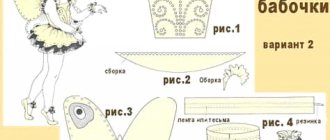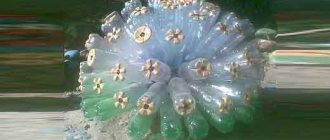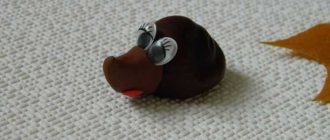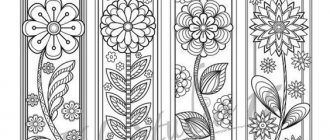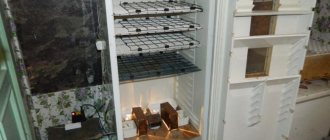Reciprocating cutter for paper and other materials
There are three main types of paper cutters: roller, guillotine and reciprocating.
It is the manufacture of the latter type of cutter that we will consider in this material. Tools and materials: -Boards; -Metal corner; -Old hacksaw; -Plywood; -Capacity; -Water; -Lemon acid; -Brush; -Roulette; -Pencil; -Hacksaw; -Vise; -Drill; -Screwdriver; - Fasteners; -Milling machine; -Manual frezer; -Carpentry glue; - angle grinder; -Cutting disc; -Petal disk; -Clamps; - Belt grinding machine; -Sharpening machine; -Metal ruler; -Chisel; -Hacksaw for metal; -Aluminum profile; -Wooden ruler; - Angle; -Stationery knife; -Wood burner or soldering iron; -Protractor; - Furniture varnish;
- Rags; -Wood crowns; -Drilling machine; -Feather drill; -Rubber; - Drying oil;
Step one: cleaning metal parts In his homemade product, the master uses several old metal parts covered with rust. To clean the parts, he places them in a container, fills them with water and stirs citric acid in the water. After a few days, the acid will eat away the rust and the parts will need to be brushed and washed. Step two: frame The frame is made of four bars. The frame size is larger than A4 format. One block protrudes beyond the frame; a knife will be attached to it. The bars are connected using the tongue-and-groove method and fixed with wood glue and screws. The mortise-tenon joints are made using a milling machine. I processed the corners and sanded the frame. Covered with drying oil.
Step three: work table The working surface of the table is made of 6 mm thick plywood. The plywood is screwed to the frame. The plywood is screwed down and the craftsman mills the edge of the work table. A plywood cover is glued onto the protruding part of the frame. Step four: counter knife The counter knife master made a corner. The worker made a groove along the width and thickness of the corner. The corner itself was cleaned of rust and shells, and mounting holes were drilled. Ideally, the knife and counter-knife should be made of the same brand of metal, but the master does not often use a cutter and a corner will be enough for his purposes. It is also important that the angle of the counter knife is even. Step five: knife The master made the blades of the knife from hacksaw blade. I cut off the part with the teeth and sanded the blade. Makes three longitudinal cuts on the side opposite to the blade. Thanks to them, it will be possible to adjust the blade extension. The blade holder is made of oak board. A cut is made in the lower part along the entire length of the knife. The plane of the holder to which the blade will be attached must be sanded from the middle to the edges. More material is removed from the middle and less towards the edges. This will create an effect similar to scissors, with the blades slightly bent towards each other.
Now you need to secure the knife to the holder. Marks mounting holes. Drills holes. Pre-screws the knife to the holder. Drill holes for the mounting bolt in the corner and protruding part of the frame. Step six: stop and measuring ruler The stop is made of an aluminum profile; a regular wooden ruler is used as a measuring ruler. Mounting holes were drilled in the profile. Markings along the width of the ruler were applied on the desktop. Using a milling cutter and chisel, a groove for the ruler was selected. Polishes the surface of the desktop. Combines the edge of the counter knife and the 0 ruler. Cuts off the protruding part. The ruler will be attached to two screws. The stop must be secured at right angles to the counter knife. Step seven: marking The master applies markings in two coordinates. One, from the counter knife along the work table, in increments of 1 centimeter, the second from the corner, a measuring ruler - stop - counter knife, in increments of 15 degrees. After marking, he burns the lines with a burner and a soldering iron.
Step eight: protective coating To protect the desktop, cover it with furniture varnish. Step nine: legs The master made the legs from rubber. I drilled holes in the rubber and cut them out with a wood saw. Sanded it. I screwed the legs to the frame.
Step ten: finishing the knife Sharpen the cutting edge of the knife.
Makes a small semi-circular cut for the thrust bolt. Covers the handle with varnish.
Screws the knife to the base. Screws the stop bolt into the base. The following photo shows the results of testing the cutter. The following materials are presented: paper, corrugated cardboard, plastic bottle, aluminum can and rubber.
Source Delivery of new homemade products to the post office
Receive a selection of new homemade products by email. No spam, only useful ideas!
*By filling out the form you agree to the processing of personal data
Become the author of the site, publish your own articles, descriptions of homemade products and pay for the text. Read more here.
usamodelkina.ru
DIY cardboard cutter - Metalworker's Guide
The possibility of making something useful out of unused or worn-out equipment attracts many home craftsmen.
One such useful device is a laser cutter.
Having such a device at your disposal (some even make it from an ordinary laser pointer), you can decorate products from various materials.
With a homemade laser cutter you can cut thin wooden parts or engrave glass
What materials and mechanisms will be required
To make a simple laser cutter with your own hands, you will need the following materials and technical devices:
- laser pointer;
- a regular flashlight equipped with rechargeable batteries;
- an old burner drive (CD/DVD-RW) equipped with a laser drive (it is not at all necessary that such a drive be in working condition);
- soldering iron;
- set of locksmith tools.
The higher the write speed of the drive, the more powerful the laser cutter will be.
Thus, you can make a simple laser cutting device using materials that are easy to find in your home workshop or garage.
The process of making a simple laser cutter
The main working element of a homemade cutter of the proposed design is the laser element of a computer disk drive.
You should choose a writing drive model because the laser in such devices has a higher power, which allows you to burn tracks on the surface of the disk installed in them.
The design of the read-type disk drive also contains a laser emitter, but its power, used only to illuminate the disk, is low.
Removing the laser module from the drive will require care
The laser emitter, which is equipped with a recordable disk drive, is placed on a special carriage that can move in two directions.
To remove the emitter from the carriage, it is necessary to free it from a large number of fasteners and detachable devices. They should be removed very carefully so as not to damage the laser element.
In addition to the usual tools, to remove the red laser diode (and this is what you need to equip a homemade laser cutter), you will need a soldering iron to carefully release the diode from the existing solder joints.
When removing the emitter from its seat, you should be careful and careful not to expose it to strong mechanical stress, which could cause its failure.
The cutter requires a red LED
The emitter, removed from the writing computer drive, must be installed instead of the LED that was originally equipped with the laser pointer. To perform this procedure, the laser pointer must be disassembled, dividing its body into two parts.
In the top of them there is an LED, which should be removed and replaced with a laser emitter from a computer disk drive.
When fixing such an emitter in the body of the pointer, you can use glue (it is only important to ensure that the eye of the emitter is located strictly in the center of the hole intended for the beam to exit).
To control power you need to assemble a simple electrical circuit, otherwise the LED may fail
The voltage generated by the power supplies in a laser pointer is not enough to ensure the efficiency of using a laser cutter, so it is not advisable to use them to equip such a device.
For the simplest laser cutter, rechargeable batteries used in a regular electric flashlight are suitable.
Thus, by combining the lower part of the flashlight, which houses its batteries, with the upper part of the laser pointer, where the emitter from the writing computer drive is already located, you can get a fully functional laser cutter. When performing such a combination, it is very important to maintain the polarity of the batteries that will power the emitter.
Scheme of a cutter based on a laser pointer
Before assembling a homemade hand-held laser cutter of the proposed design, it is necessary to remove the glass installed in it from the tip of the pointer, which will impede the passage of the laser beam.
In addition, you need to once again check the correct connection of the emitter with the batteries, as well as how accurately its eye is located in relation to the output hole of the pointer tip.
Homemade paper cutter. How to make a sandpaper cutter
The presented guillotine, made by hand, works on the principle of lever shears and is designed for cutting sheet metal with a thickness of no more than 3 mm.
It is made from improvised materials, in particular from an old file and scraps of metal structures.
Manufacturing a guillotine consists of several stages. First, it is necessary to carry out drawing work in order to accurately determine the dimensions of the product. The applied scale is 1:1.
It is also recommended to draw a kinematic diagram, with the help of which it will be possible to determine the dynamic parameters of moving parts without taking into account the acting forces.
Drawings of parts drawn on paper are printed on a printer and then cut out. The machine model is assembled from the cut out parts. This is done in order to verify the correctness of the calculations made and the exact correspondence of the dimensions of each individual component in the context of the functioning of the entire mechanism as a whole.
It is very important to determine the cut level indicator. It will be located at the intersection of the movable blade with the base, which is conventionally indicated by a line drawn in pencil.
The next step is to select pieces of scrap metal of suitable size, followed by template drawing of the contours of future components on them. It is at this moment that the paper scraps from under the animation turn into an important stencil.
In this case, the blanks were scraps of a corner and a sheet piece of iron lying around. And as a result of intensive work with a grinder or a gas cutter, the main parts of the metal scissors were obtained. These are two ears, a handle, a body holder and the body itself.
A base of two welded corners is attached to the body of the guillotine. Their thickness is 50 mm. Pay attention to the space taken into account for entries in the mode: “sheet up”, “sheet down”. There is also free space for a file. In this case, one must proceed from the parameters of its thickness plus the required gap.
Then, with the help of mounting bolts, a sequential assembly process occurs. The handle is attached to the main structure of the scissors through two ears. After which one end of the body holder is screwed to it. The second one is connected to the handle.
The result should be something like this. Provided that no mistakes were made in the previous stages, the moment of complete cutting should occur when the handle reaches a horizontal position. The minimum movement of the handle against the background of the maximum stroke along the radius must also be achieved.
The blank for the two blades was an ordinary old, and therefore ground, file. To begin with, it should be cut into two parts. Three holes are drilled in each of them for fastening. After this, the blade profile is formed and the edges are directly sharpened.
The images show where the two cutting knives are attached. The movement of the upper knife should not be obstructed by other parts of the machine. It is important to position the profile in such a way that across the entire width of the cut, the interaction of the knives occurs at an angle of 6-8 degrees.
Ready-to-use homemade lever scissors are securely fixed to the working surface of the workbench using clamps or specially drilled holes.
Provided that basic technological rules are observed during the manufacture of the machine, it will certainly show very high efficiency. And it will cut both paper sheets and 3mm iron with ease.
Video: DIY manual guillotine for cutting metal.
Paper cutter
- a device for quickly and smoothly cutting paper. Very useful when designing scrap pages and postcards. The cutter allows you to cut a sheet of paper so smoothly that no scissors can cut it.
According to the method of impact on the knife, cutters are divided into mechanical (manual) and electric. In turn, hand cutters come in roller, saber and guillotine types.
Roller cutter
(also known as a disk cutter or trimmer) is a rectangular base (work table), along which the cutting mechanism moves along a guide. It, in turn, consists of a sharpened metal disk enclosed in a protective casing. When cutting, the paper ends up between the roller cutter blade and the counter knife (a hard metal plate attached to the end of the platform on the side where the cutter moves). This cutter is ideal for working with a small amount of paper - up to 10 sheets, it comes in different sizes, the most common are 22.5 x 12.5 cm; 31 x 31 cm; 20 x 46 cm. It takes up little space and has a valuable quality - the ability to cut an edge less than a millimeter wide, which allows you to work with maximum precision. In roller cutters, the knives are not subject to secondary sharpening, although they are called self-sharpening. They just need to be changed after a certain time.
Reciprocating cutter
calls
levevg.ru
Possibilities of a homemade guillotine
A homemade guillotine can work like a factory machine. This has been proven by the designs of homemade craftsmen who are able to cut metal no worse than industrial machines. The most common types of guillotines are those with a straight movement of the upper knife and those with an angular rotation. The first type of machine more accurately corresponds to the name - the guillotine, and allows you to cut metal very accurately. But the features of the second type make it possible to cut not only sheets, but also fittings and corners of quite large sizes.
Size restrictions are set on do-it-yourself metal cutting installations for purely natural reasons. Unlike industrial ones, which have a hydraulic, electric or pneumatic drive, homemade ones are equipped only with a mechanical lever or pedal, and the thickness of the metal being cut depends on the physical strength of the operator.
An electromechanical drive can be installed in a DIY workshop, but hydraulics and pneumatics are very difficult to install. This is available only to highly qualified masters.
A do-it-yourself guillotine can cut:
- sheet black and galvanized steel up to 1.5 mm thick;
- aluminum;
- stainless steel up to 0.6 mm;
- plastic;
- cardboard.
The design of a homemade machine must take into account the features of already working structures. A description of one of the guillotine options is given below.
Paper Cutting Tools | scruboo.ru
A paper cutter is a device for cutting paper quickly and evenly. Very useful when designing scrap pages and postcards. The cutter allows you to cut a sheet of paper so smoothly that no scissors can cut it.
According to the method of impact on the knife, cutters are divided into mechanical (manual) and electric. In turn, hand cutters come in roller, saber and guillotine types.
A roller cutter (also known as a disk cutter or trimmer) is a rectangular base (work table) along which the cutting mechanism moves along a guide. It, in turn, consists of a sharpened metal disk enclosed in a protective casing. When cutting, the paper ends up between the roller cutter blade and the counter knife (a hard metal plate attached to the end of the platform on the side where the cutter moves). This cutter is ideal for working with a small amount of paper - up to 10 sheets, it comes in different sizes, the most common are 22.5 x 12.5 cm; 31 x 31 cm; 20 x 46 cm. It takes up little space and has a valuable quality - the ability to cut an edge less than a millimeter wide, which allows you to work with maximum precision. In roller cutters, the knives are not subject to secondary sharpening, although they are called self-sharpening. They just need to be changed after a certain time.
The saber cutter is called because of the knife, which is similar to a saber. The reciprocating cutter is the most powerful and is used for working with large volumes of paper, but their accuracy remains within 0.1 mm. Reciprocating cutters have a slightly different operating principle. The sharpened knife of the cutter is fixed at one end (to avoid injury it is covered with a protective casing), and at the other it has a handle. By lowering it, they cut the paper. The knife can be sharpened in a reciprocating cutter, although this procedure is not as simple as it seems at first glance. In addition, using a reciprocating cutter is much more difficult than using a roller cutter. To get the perfect result, you have to try.
The guillotine cutter is used for processing large print runs and is perfect for large printing houses. This cutter can be manual, semi-automatic or automatic. Its working mechanism (a sharpened heavy cutter knife) is located on a massive table and is driven by a lever or electric drive. The blade moves not only from top to bottom, but also obliquely along the cutting line and is capable of “processing” impressive stacks of sheets up to 8 cm. At the same time, the accuracy reaches fractions of a millimeter. When the cutter knife becomes dull, it is removed and sharpened, and after several sharpenings it is replaced.
A breadboard knife is used for cutting paper, sharpening pencils, and is also necessary for cutting out small parts and complex shapes. It is a thin, replaceable blade similar to a feather with a protective cap. When working with such a knife, you must have a breadboard mat (cardboard, hardboard or plywood) so as not to damage the table on which you are working.
Roller breadboard cutters allow you to quickly and effortlessly cut paper, as well as make a variety of shaped cuts with special attachments.
The circular knife is used for cutting circles with a diameter of 10 mm to 150 mm. Ideal for making cards and round parts for scrapbook pages. The knife is an axis with a needle and a movable leg on which a blade is mounted, by means of rotation of which a circle is cut. There is also a scale on the movable leg for selecting the diameter of the circle to be cut. It is necessary to work with a compass knife on a breadboard mat. Make sure all screws on the compass are tight before cutting.
A shape cutter can easily cut out any shape using a special stencil; it is indispensable when creating decorative elements for pages and postcards. Some models of shape cutters can be used without a stencil. When working with such a cutter, you must have a prototype mat so as not to damage the table on which you are working and be sure to check the serviceability of the blade and, if necessary, adjust it in accordance with the density of the selected material.
I hope the review will be useful. We wish everyone a good mood!
www.scraboo.ru
Reciprocating scissors
A type of metal shears that works on the guillotine principle is a machine in which the upper knife moves not along guides, but in an arc around a rotary axis on which one of the ends of the knife is fixed. Its design is reminiscent of a photo cutter, which was once used to crop photographs.
The second end of the knife is connected directly to the lever handle. The knife acts on the sheet of metal not simultaneously throughout the entire cut, but gradually, which allows you to cut metal of considerable thickness without too much effort. By adjusting the gap between the knives, you can achieve fairly decent results in terms of cutting accuracy and the absence of lateral deformations in the working area.
As a rule, the upper knife is placed on a bearing and frictional forces do not increase the operator effort required for cutting.
Homemade paper cutting machine
Today, almost every home has a printer, laser or inkjet.
Sometimes you have to print photos, cards, etc. on larger paper.
Afterwards you will need to trim the paper exactly to the required size.
To do this, you don’t have to buy a machine; you can make it yourself.
I think it won’t be difficult to make a simple machine for cutting A4 into A5 and A6 formats from photographs.
For this we need:
- Chipboard 20*180*540.
- PVC corner 20*20.
The main thing is to accurately install the guides. Gaskets 4 sheets of paper thick are placed under their ends.
Using this device, you can easily and evenly cut the desired size of paper.
Author: valeriy
P O P U L A R N O E:
- Decoupage. A convenient way to glue napkins
Salt method for gluing napkins
Hello, dear readers!
Happy New Year 2022! I wish that he becomes a good boy for you, pleases you with his gifts and pleases you with pleasant surprises
